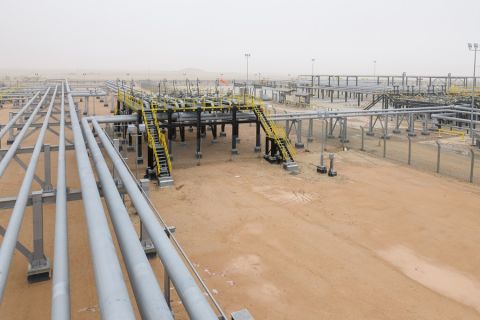U.S. energy regulators on March 19 approved Canadian energy company Pembina Pipeline Corp.'s plan to build and operate a natural gas pipeline and LNG export terminal at Jordan Cove in Oregon.
"The recent fall in LNG prices to record lows has not dented investor interest in setting up new LNG export facilities in the United States," Neil Chatterjee, chairman of the U.S. Federal Energy Regulatory Commission (FERC), said after the agency authorized the Jordan Cove project.
Chatterjee was referring to a decline in global gas prices to record or near record lows.
Even before the coronavirus cut economic growth and reduced demand for energy around the world, gas prices were already at their lowest in years due to mild winter weather, record amounts of storage in Europe, the U.S.-China trade war and an oversupply of LNG after several new export plants entered service over the past year.
FERC Commissioner Richard Glick, the lone Democrat on the commission, voted against the Jordan Cove authorization.
"As is the norm these days, this order fails to consider the impact the projects’ greenhouse gas emissions will have on climate change," Glick said, noting the project would significantly impact 20 threatened and endangered species, historic properties and create short-term housing issues.
"We must evaluate whether the proposed LNG projects we are reviewing are actually going to be built," Glick said.
Officials at the company were not immediately available to say when they plan to make a final investment decision to build the project.
In mid-2019, the company said the $10 billion Jordan Cove project could enter service in 2025.
Jordan Cove is one of more than three dozen LNG export projects under development in the United States, Canada and Mexico.
Analysts, however, have said they expect only a handful of those projects to enter service over the next decade.
Jordan Cove is designed to produce 7.5 million tonnes per annum of LNG, equivalent to around 1 billion cubic feet per day (Bcf/d) of natural gas.
One billion cubic feet is enough gas to supply about five million U.S. homes for a day.
It would include five liquefaction trains, two LNG storage tanks and the 229-mile (369-km) Pacific Connector pipeline capable of transporting up to 1.2 Bcf/d of gas.
As proposed, the LNG terminal would be called upon by about 120 LNG carriers per year, FERC has said.
Recommended Reading
Shipping Industry Urges UN to Protect Vessels After Iran Seizure
2024-04-19 - Merchant ships and seafarers are increasingly in peril at sea as attacks escalate in the Middle East.
Paisie: Crude Prices Rising Faster Than Expected
2024-04-19 - Supply cuts by OPEC+, tensions in Ukraine and Gaza drive the increases.
Report: Freeport LNG Hits Sixth Day of Dwindling Gas Consumption
2024-04-17 - With Freeport LNG operating at a fraction of its full capacity, natural gas futures have fallen following a short rally the week before.
Permian NatGas Hits 15-month Low as Negative Prices Linger
2024-04-16 - Prices at the Waha Hub in West Texas closed at negative $2.99/MMBtu on April 15, its lowest since December 2022.
BP Starts Oil Production at New Offshore Platform in Azerbaijan
2024-04-16 - Azeri Central East offshore platform is the seventh oil platform installed in the Azeri-Chirag-Gunashli field in the Caspian Sea.


